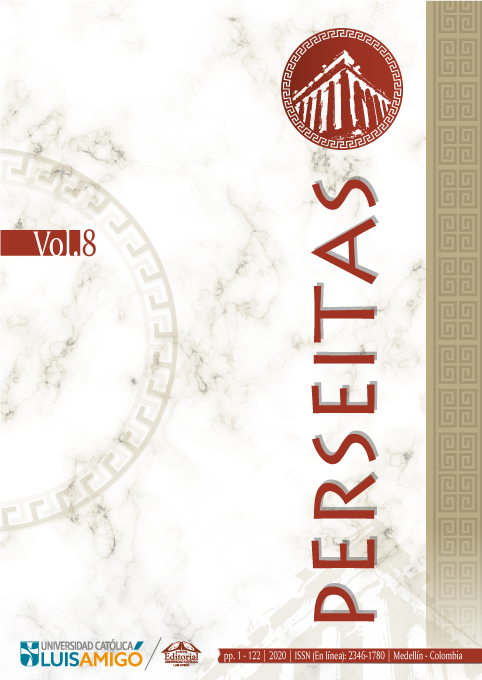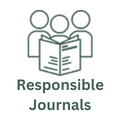Wodeham's theory about the untrue perception of circles suspended in mid-air
DOI:
https://doi.org/10.21501/23461780.3669Keywords:
Adam of Wodeham, Philosophy of mind, Illusions, Cognition, False beliefsAbstract
When we see a rod moving in circles, a circle appears in the air from the first person's perspective. This illusion was explained by Peter Auriole by the idea that, in such case, there is an apparent entity in our vision, which is the direct cause of such illusion. Wodeham presents a different but similar explanation to Ockham's. For him, when an agent believes that a suspended circle exists, he infers a conclusion which is "There is a circle suspended in the air." This inference is almost imperceptible to us, according to Wodeham. In this article, I reconstruct Wodeham's explanation of the process by which an agent believes that "There is a circle suspended in the air." This process is different from what Ockham proposed.
Downloads
References
Avicena. (1972). Avicenna Latinus. Liber de Anima seu Sextus de naturalibus I.II.III (S. Van Riet, Ed.). Louvaine, Leiden: E. Peeters, E. J. Brill.
Charalampous, C. (2013). William of Ockham’s Mind/Body Dualism and Its transmission to Early Modern Thinkers. Intellectual History Review, 23(4), 537–563. http://doi.org/d583
Courtenay, W. J. (1978). Adam Wodeham: An Introduction to His Life and Writings. Leiden: E.J. Brill.
Gamboa, L. D. (2018). El conocimiento intuitivo como garante epistémico según William of Ockham y Adam of Wodeham. Bulletin de Philosophie Médiévale, 60, 47–66. http://doi.org/d584
Kaukua, J. (2014). Avicenna on the Soul’s Activity in Perception. En J. F. Silva (Ed.), Active Perception in the History of Philosophy (pp. 99-116). Springer.
Lottin, O. (1932). La pluralité des formes substantielles avant saint Thomas d’Aquin: Quelques documents nouveaux. Revue néo-scolastique de philosophie, 36, 449–467 https://doi.org/10.3406/phlou.1932.2671
McGinnis, J. (2010). Avicenna. Oxford Univeristy Press.
McGinnis, J. (2013). New Light on Avicenna: Optics and Its Role in Avicennan Theories of Vision, Cognition and Emanation. En J. A. Tellkamp & L. X.
López-Farjeat (Eds.), Philosophical Psychology in Arabic Thought and the Latin Aristotelianism of the 13th Century. J. Vrin, pp. 41-57.
Ockham, Guillelmi de (1967-2000). Opera Theologica (Vol. 10; G. Gál, S. Brown, et. al. eds). St. Bonaventure, N.Y.: Franciscan Institute.
Ockham, Guillelmi de (1974-2001). Opera Philosophica (Vol. 7; P. Boehner, G. Gál, S. Brown, et. al. eds.). St. Bonaventure, N.Y.: Franciscan Institute.
Pickavé, M. (2017). Peter Auriol and William of Ockham on a Medieval Version of the Argument from Illusion. En J. Pelletier & M. Roques (Eds.), The Language of Thought in Late Medieval Philosophy. Essays in Honor of Claude Panaccio (pp. 183-199). Springer.
Wodeham, A. (1974). Prologus. En G. de Ockham, OPh I. Summa Logicae (pp. 3–5). Editiones Instituti Franciscani Universitatis S. Bonaventurae.
Wodeham, A. (1988). Tractatus de indivisibilibus (R. Wood, Ed.). Kluwer Academic.
Wodeham, A. (1990). Lectura secunda in librum primum Sententiarum, Prologus et distinctio I-XXVI, Vol. 3. R. Wood & G. Gál (Eds.). St. Bonaventure University.
Zavalloni, R. (1951). Richard de Mediavilla et la controverse sur la pluralité des
formes. Louvain: Éditions de l’Institut supérieur de philosophie.
Published
How to Cite
Issue
Section
License
Copyright (c) 2020 Perseitas

This work is licensed under a Creative Commons Attribution-NonCommercial-NoDerivatives 4.0 International License.
La revista y los textos individuales que en esta se divulgan están protegidos por las leyes de copyright y por los términos y condiciones de la Licencia Creative Commons Atribución-No Comercial-Sin Derivar 4.0 Internacional.
















